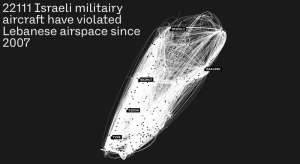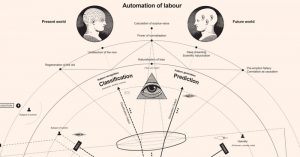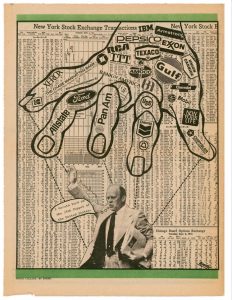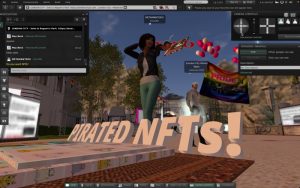The generation, handling, propagation and control of information orchestrate our lives. For better or worse. Digital technology has granted us wider access to knowledge and to all kinds of services that seemingly make our life more pleasant and productive. It has also burdened it with algorithmic biases, surveillance, filter bubbles & disinformation, monetisation of private experiences and other (by)products of 21st-century data-based capitalism.
INFORMATION (Today), an exhibition currently open at Kunsthalle Basel, features artists who investigate the dynamics behind information production and the kind of impact they have on society.
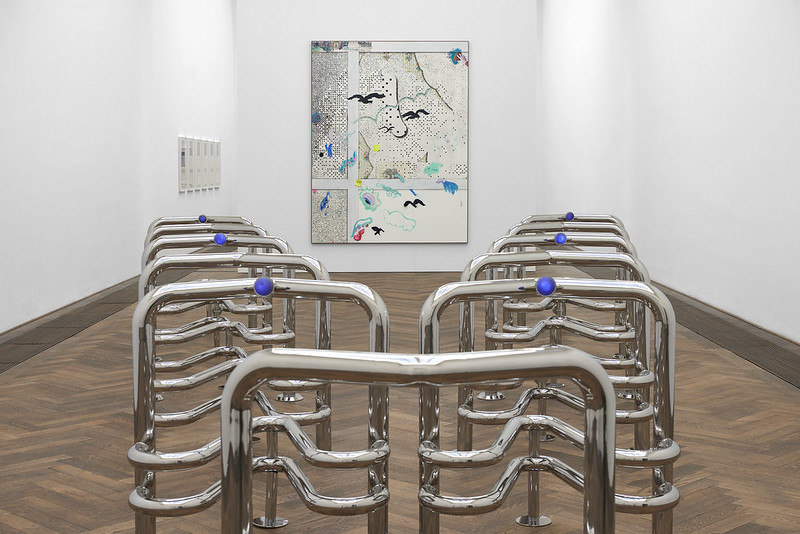
Marguerite Humeau, Riddles (Jaws), 2017–2021 (front) and Laura Owens, Untitled [SMS +41 79 807 86 34], 2021 (back). Installation view, INFORMATION (Today), Kunsthalle Basel, 2021. Photo: Philipp Hänger / Kunsthalle Basel
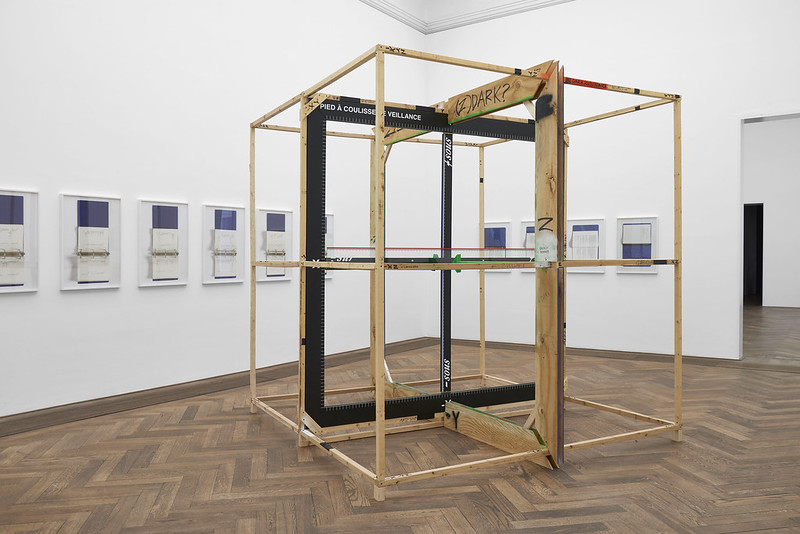
American Artist, Veillance Caliper (Annotated), 2021 (front); Alejandro Cesarco, New York Public Library Picture Collection (Subject Headings), 2018 (back, left); Alejandro Cesarco, New York Public Library Picture Collection (Subject Headings – Cross References), 2018 (back, right). Installation view, INFORMATION (Today), Kunsthalle Basel, 2021. Photo: Philipp Hänger / Kunsthalle Basel
The title of the show is a direct reference to INFORMATION, an exhibition of conceptual art curated by Kynaston McShine at New York’s Museum of Modern Art 50 years ago. INFORMATION gave visibility to the then emerging “Information Age” and to the influences that advances in computing and communication technologies could have on society. The artworks exhibited in Basel show, how, 50 years after the landmark MOMA show, information has taken such an essential place in our existence that we prefer not to think about its most unpalatable sides.
INFORMATION (Today) confronts today’s crisis of information from angles I wasn’t expecting. The works talk about privacy, infrastructures of power and other issues that have already been examined in many shows before. But they also travel back in time, hovering between past technologies and future innovation; they consider sources of information that I would normally dismiss and reveal data-generating mechanisms I had never heard of.
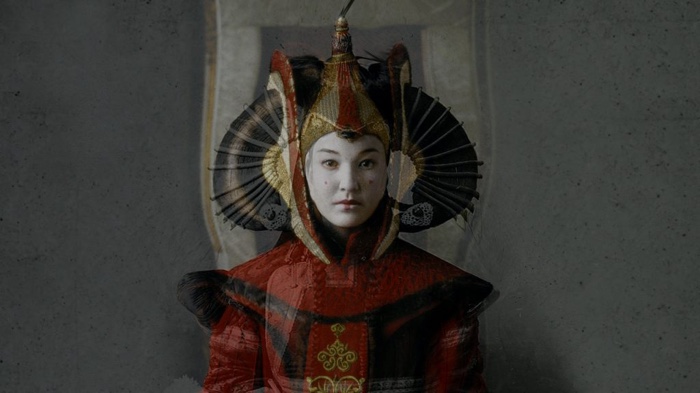
Liu Chuang, Bitcoin Mining and Field Recordings of Ethnic Minorities (video still), 2018
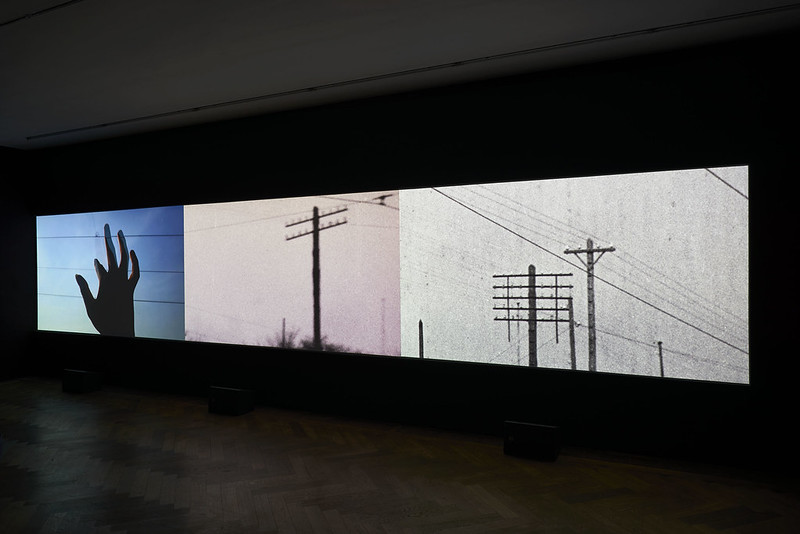
Liu Chuang, Bitcoin Mining and Field Recordings of Ethnic Minorities, 2018. Installation view, INFORMATION (Today), Kunsthalle Basel, 2021. Photo: Philipp Hänger / Kunsthalle Basel
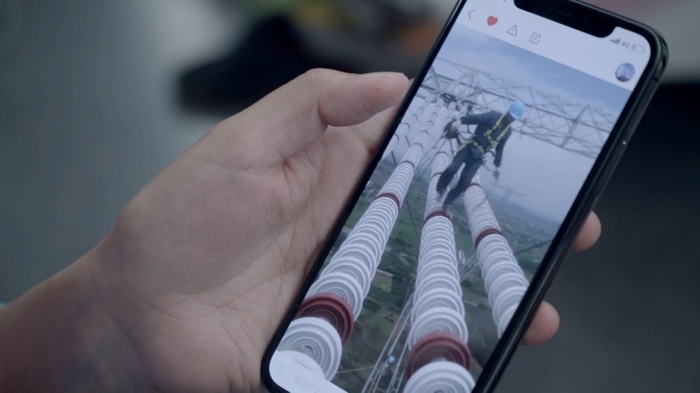
Liu Chuang, Bitcoin Mining and Field Recordings of Ethnic Minorities (video still), 2018
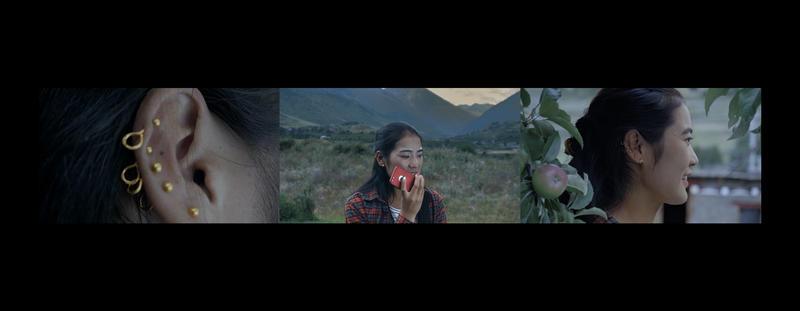
Liu Chuang, Bitcoin Mining and Field Recordings of Ethnic Minorities (video still), 2018
My favourite work in the show is Liu Chuang‘s Bitcoin Mining and Field Recordings of Ethnic Minorities. The three-channel videowork describes Bitcoin miners chasing cheap energy source around China (where most of the mining still appears to take place despite the country’s ban on cryptocurrency mining.) They would bring their machines to dams in Sichuan for low-cost hydropower during rainy seasons, to Xinjiang for wind power in times of drought, to coal-fired power stations in Inner Mongolia in spring, and finally back to Sichuan. The energy provided by decommissioned hydroelectric power plants provided the artist with much food for thought. The semi-abandoned plants not only provide cheap energy source but they also act as a suppressor of noise from the mine’s cooling fans. In this “post-industrial” scenario, a new economy of extraction is feeding off the ruins of an earlier industrial age, revealing how the ongoing virtualisation of the economy still depends on further exploiting our planetary commons.
Chuang’s work also exposes how miners have reverted to a transhumance lifestyle once associated with some ethnic minorities that used to live in the same regions. After field trips and extensive research, Liu noticed that many of the Bitcoin mines were installed in what the historian Willem van Schendel has designated as Zomia – a vast area of Southeast and East Asia spanning parts of Myanmar, Thailand and four provinces of southwest China. The regions were inhabited by ethnic minorities who have historically maintained antagonistic relationships with Han Chinese states and who have been massively displaced by modern infrastructure projects.
Liu interweaves the cryptocurrency mining and the colonisation of ethnic minorities threads together with a vast array of political and sociotechnical topics – from the early days of the telegraph (which caused some Chinese operators to suffer from repetitive strain injury) to platform capitalism, from modernity in pre-1949 China to cult sci-fi movies from the 1970s. The work draws attention to material and immaterial lines of power that have been deployed in China, over its long history, to control people, energies and territories, and to generate profit.
The content of the video is gripping. The images are exquisite. They mix early archival material with videos of fiber-optic cables emerging from the sea, drone images of river valleys and dams, footage taken from the social media accounts of an intrepid power-line repairman, etc. The voiceover narrative is delivered in the endangered Sino-Tibetan language of Muya.
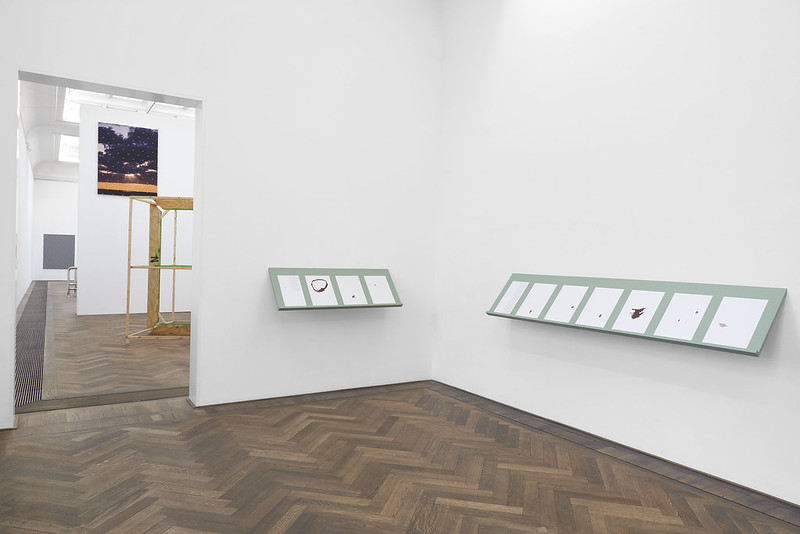
Lawrence Abu Hamdan, For the Otherwise Unaccounted, 2020. Installation view, INFORMATION (Today), Kunsthalle Basel, 2021. Photo: Philipp Hänger / Kunsthalle Basel
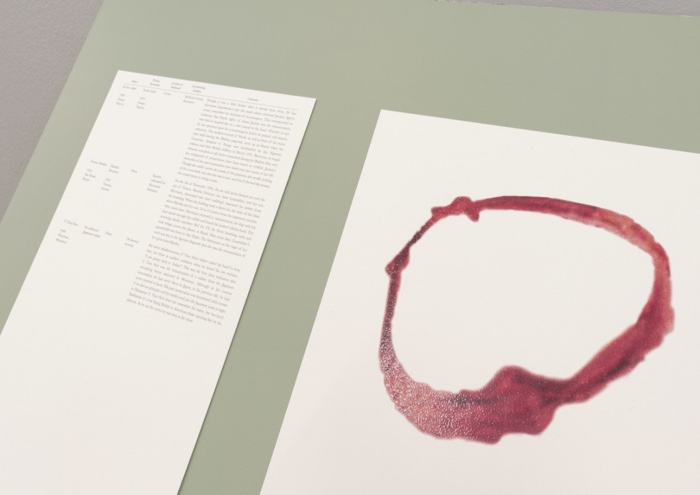
Lawrence Abu Hamdan, For the Otherwise Unaccounted, 2020. Exhibition view Secession, 2020. Photo: Iris Ranzinger
In 1997, Dr Ian Stevenson, a psychiatrist and professor at Virginia School of Medicine, published Reincarnation and Biology: A Contribution to the Etiology of Birthmarks and Birth Defects. Based on some 30 years of research on people across the world who claimed to remember past lives, the two-volume publication reported two hundred cases in which birthmarks and birth defects seemed to correspond to a wound inflicted in a previous life, often in a violent way.
Lawrence Abu Hamdan‘s For the Otherwise Unaccounted consists of a series of thermographic prints that investigate the idea that birthmarks associated with reincarnation could be considered a medium for justice. These birthmarks suggest that testimony can be stored in and on the body, become archives of past traumas, injustices and violence that have otherwise escaped the historical record due to colonial subjugation, corruption, lawlessness or legal amnesty. This new type of testimony, because it does not constitute scientific facts, has yet to be accepted for the production of truth and history.
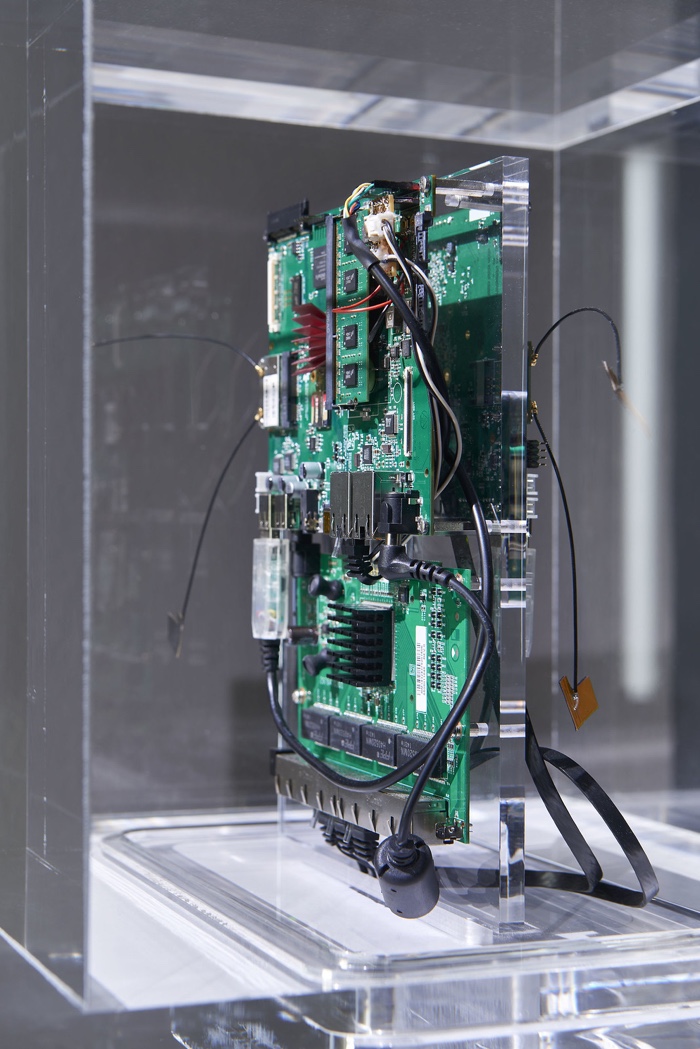
Trevor Paglen, Autonomy Cube, 2015. Installation view, INFORMATION (Today), Kunsthalle Basel, 2021. Photo: Philipp Hänger / Kunsthalle Basel
Autonomy Cube, by Trevor Paglen and Jacob Appelbaum, is a transparent minimalist sculpture filled with circuit boards, wiring and electronics that doubles as an open-Wi-Fi network. Any visitor can use it for free. All your Wi-Fi data traffic is sent over the Tor network, anonymising the web traffic and protecting it from any tracking, surveillance, external profit or censorship. Furthermore, for the duration of the exhibition, the sculpture turns the host institution’s internet connection into a Tor relay, helping others around the world to anonymise their own internet traffic using the Kunsthalle infrastructure.
By offering untraceable surfing in a space such as an art institution, the cube forces visitors to question their own readiness to hand over their data without even checking whether adequate levels of privacy are ensured.
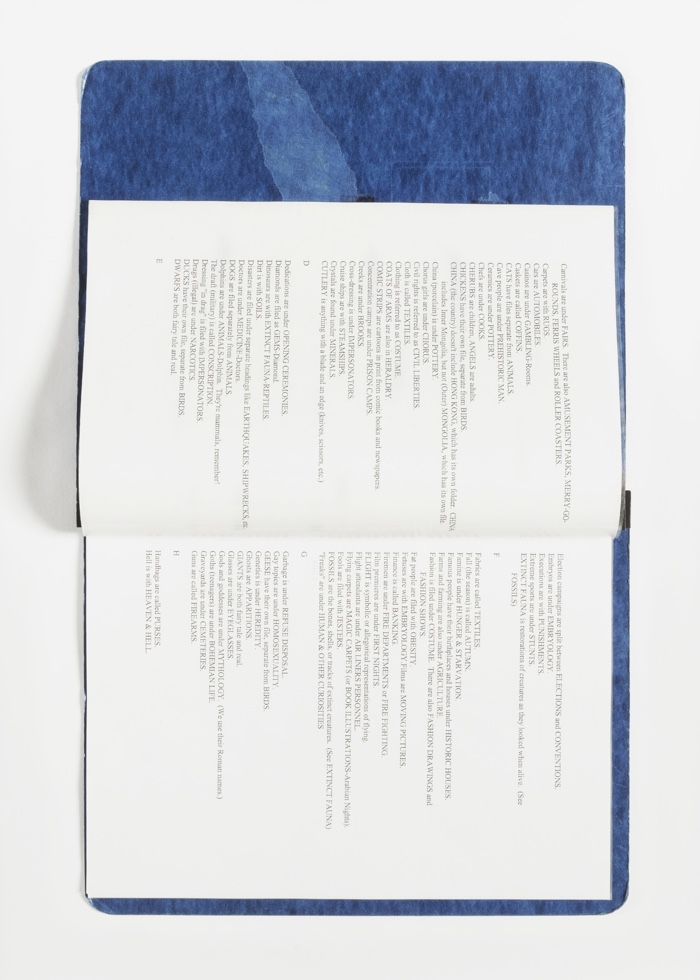
Alejandro Cesarco, New York Public Library Picture Collection (Subject Headings – Cross References), 2018 (via)
Alejandro Cesarco uses photographs of open binders to expose some of the classification principles of the New York Public Library, one of the largest public libraries in the world. The subject headings listed on the pages of the binders make it easier to use the collection but they also reveal some of the exclusions, prejudices and systems of values that govern it.
Reading the entries in the binders you learn that: Freaks are archived under “Humans & Other curiosities”, “Cherubs are children. Angels are adults”, “Birds does not include Chicken, Ducks, Geese or Turkeys”, “Native Americans are still called Indians”, “Jesus is not found under Bible but under Christ”. And many of us will do what they want with the information that “Orgies have very little sex. It’s mostly people eating and drinking.”
The artist calls this classification “the pre-cursor to Google Image’s algorithm.” Both facilitate the navigation of information but they also reflect the biases of the humans who established the criteria and categories that underpin these systems.
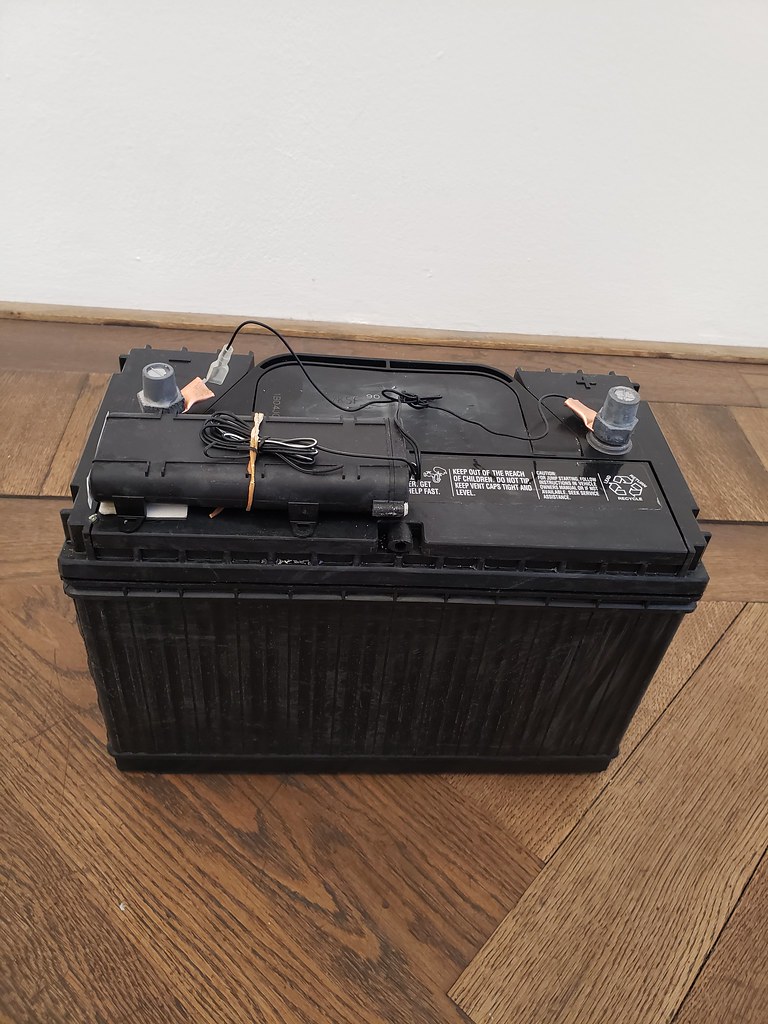
Cameron Rowland, 0D20612, 2014
Cameron Rowland placed a LoJack device powered by a car battery on the floor of one of the exhibition rooms. A LoJack is a stolen vehicle recovery system that is hidden by a certified technician inside a vehicle and transmits a signal. When the car is missing, if the LowJack has been registered in the LoJack database, it can be located by the police. Dealers can also check battery and inventory status, manage lots and even send targeted marketing campaigns to customers.
Rowland’s LoJack is operational but not registered.
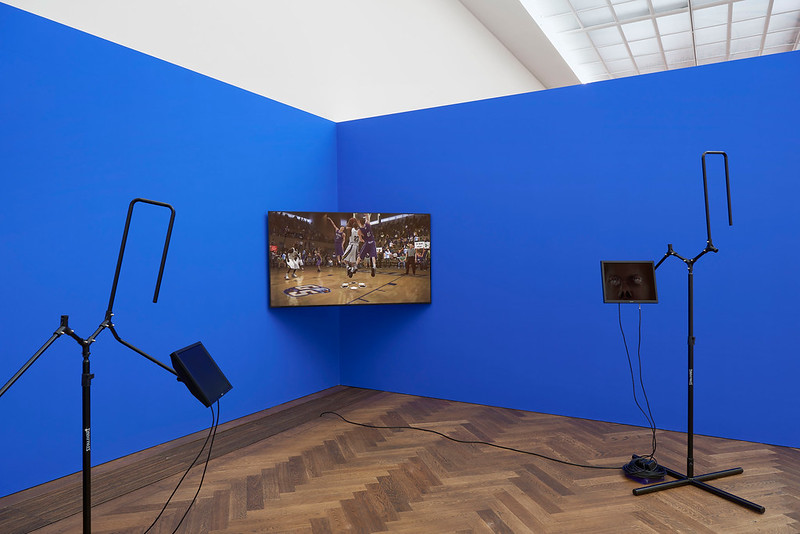
Sondra Perry, IT’S IN THE GAME ‘18 or Mirror Gag for Projection and Three Universal Shot Trainers with Nasal Cavity, Pelvis, and Orbit, 2018. Installation view, INFORMATION (Today), Kunsthalle Basel, 2021. Photo: Philipp Hänger / Kunsthalle Basel
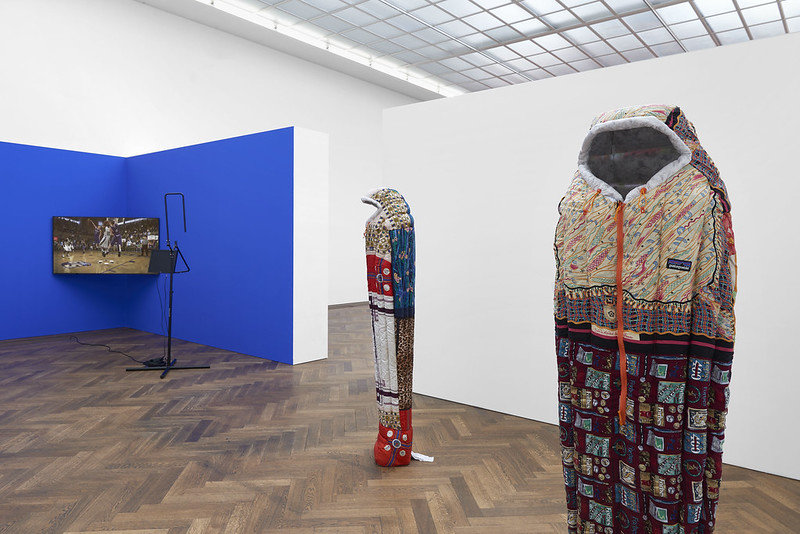
Simon Denny, Remainder 1, 2019 (right); Simon Denny, Remainder 2, 2019 (middle); Sondra Perry, IT’S IN THE GAME ‘18 or Mirror Gag for Projection and Three Universal Shot Trainers with Nasal Cavity, Pelvis, and Orbit, 2018 (left). Installation view, INFORMATION (Today), Kunsthalle Basel, 2021. Photo: Philipp Hänger / Kunsthalle Basel
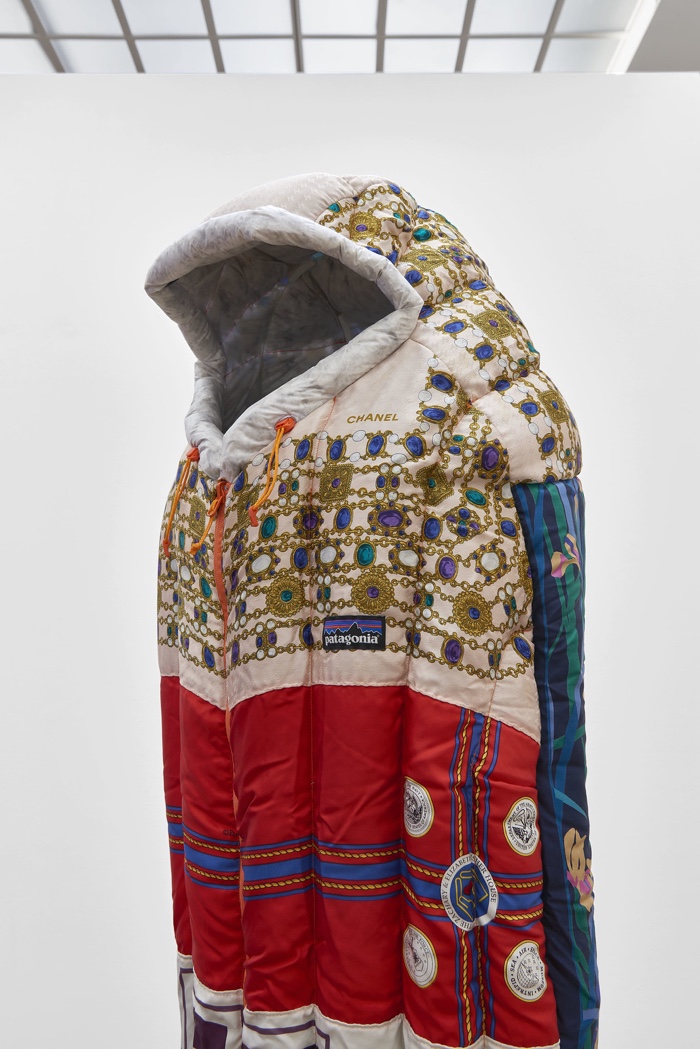
Simon Denny, Remainder 2, 2019. Installation view, INFORMATION (Today), Kunsthalle Basel, 2021. Photo: Philipp Hänger / Kunsthalle Basel
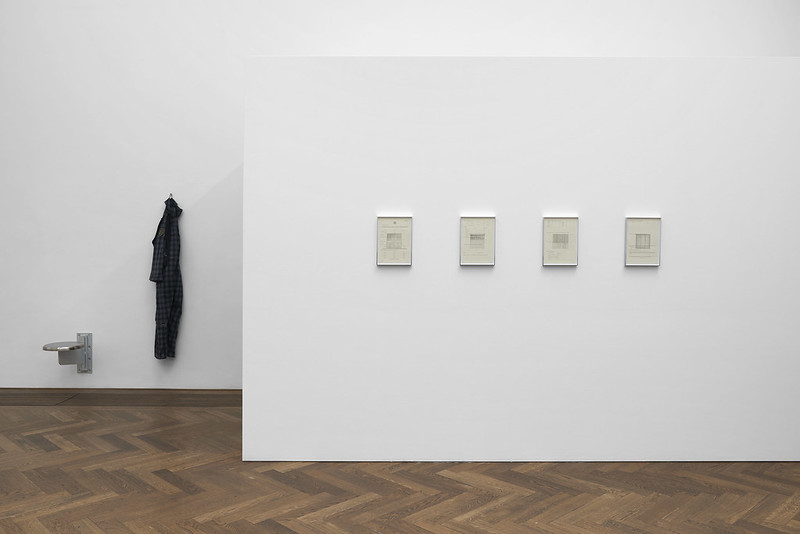
Sung Tieu, Loyalty Questionnaire, 2021 (front) and In Cold Print, 2020 (back, detail). Installation view, INFORMATION (Today), Kunsthalle Basel, 2021. Photo: Philipp Hänger / Kunsthalle Basel
INFORMATION (Today) was curated by Elena Filipovic. The exhibition remains open until 10 October 2021 at Kunsthalle Basel.

